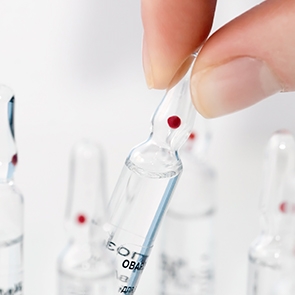Amongst tremendous pressure on the healthcare system – from squeezed budgets and shifting market trends to new therapy areas – establishing and maintaining access to drugs in this evolving environment is critical. Seismic change is underway across the board.
The pharmaceutical industry has faced a prolonged period of disruption. Market dynamics have radically altered, with emerging markets accounting for a growing share of revenues – generic players are now an important part of the competitive mix. There has also been a shift from small molecules to biologics and then to biosimilars; and last, but not least, changes in the role of the patient as costs rise, and a focus on convenience and personalised care develops.
The industry structure is also rapidly evolving – in part as a response to the market dynamics, and in part as a driver of them. Heightened regulatory standards have been accompanied by changes in the stakeholders who influence prescription decision-making, not least the very different role that payers are now playing. One consequence of this increased influence has been more innovation in payment mechanisms, with the emergence of shared saving and risk models.
This has also affected the product mix and provision of care landscape. As understanding of diseases and optimal treatment has evolved, there has been a transition from single drugs to various combinations and to more integrated treatments across a wider range of points of care. New sciences and technologies are constantly expanding the knowledge of disease progression. Disease management and treatment options are, in many therapy areas, in an unparalleled state of change.
Future Outlook
As these disruptive influences continue to play out, healthcare systems look significantly different today to how they appeared in 2000. How might they look in 2030?
Healthcare systems built around infectious diseases are re-engineering to deal with the chronic care tsunami
The economic basis for many systems continues to move from activity to value, and from input to output. This is being accompanied by a significant system reform
The role of the patient is fundamentally changing from passive recipient to active participant
There is a real and meaningful opportunity for ‘connected health’ across the system and, at a patient level, an opportunity that may well transition to a requirement
New commercial models are emerging, from traditional players to new entrants – both in anticipation of and in response to the change
Maximising Current Asset Value
Notwithstanding all these changes and the fundamental impact they have on the traditional pharma model, shareholder expectations need to be managed and continued growth secured during this challenging time. In light of this, pharma companies must strive to optimise performance both during and post-launch, as part of efforts across the board to maximise the value of every asset.
The established launch business model still holds good – shape the product; shape the market; shape the organisation. There is, however, enormous pressure to improve the speed and quality of execution. At the same time, evolutions in science and technology mean a drug is increasingly not ‘just a pill’, but a ‘healthcare solution’ that must be launched and marketed. As a consequence of heightened competition, shortened timelines and a greater demand for evidence in all its various forms, we have seen increasingly complex launches, with multiple moving parts to coordinate within and across assets. New competencies and functional capabilities are required to meet the internal and external demands of these launches – but all this occurs in the context of fewer resources overall, as margin pressures and a greater number of launches result in teams being told to ‘do more with less’.
Improving Launches
The industry has responded to this by pursuing a number of refinements to the established launch model, with the aim of improving performance before and after a launch. Four of these approaches have taken hold:
Enhanced Launch Planning
Focusing on systematically identifying and capturing learnings from previous launches, and building the people and processes needed to enhance capabilities for future ones, this refinement places emphasis on the manoeuvrability of the organisation and makes heavy use of war gaming and scenario planning.
Centres of Excellence
Similarly, companies are investing in ‘centres of excellence’ or ‘launch academies’ to instil launch capabilities within the organisation and codify learnings. This is a pragmatic response to an all too common situation: the launch team will try to recruit people with experience in the therapeutic area and launch activity, but in practice, then end up having to work with people who have an understanding of the therapeutic area but have not yet conducted a launch, or vice versa. Introducing ‘centres of excellence’ facilitates knowledge-sharing and ensures you have a better prepared, higher impact team.
Creating a Project Management Office
Recognising the increasing complexity of a launch, clients are either building or buying in professional project management expertise to run an office. This is not intended to be a box-ticking exercise, but rather a way of navigating the complexity by improving execution, and addressing any miscommunications or breakdowns that commonly occur at critical interfaces.
Building New Capabilities
In response to payer demand for robust demonstrations of value, pharma companies have expanded teams beyond the traditional pricing and market access (P&MA) skillsets to build the broader capabilities required to demonstrate value in a more holistic way. The industry has seen a huge growth in real world evidence capabilities, either internally or outside the business in the form of an external work bench. Personalised healthcare is also driving significant change, from R&D through to commercial teams. In response, clients are taking steps to prepare by starting to build capabilities to create value stories beyond pill offerings.
Implications For P&MA Teams
The evolving operating model has had a huge impact on the P&MA team. More is expected of them – greater knowledge, increased technical expertise and enhanced business skills – despite there being tremendous resource constraints.
Knowledge
The breadth of knowledge P&MA teams are now expected to provide to support launches is much wider than before, as these involve a greater number of emerging markets, lifecycle stages and funding routes that would not have been explored in the past. Unsurprisingly, there is often less in-house knowledge and the information is not easily accessible. Furthermore, greater variation in market scope, stage and funding routes across assets result in a lack of standard approaches, greater uncertainty and fewer cross-product learnings and synergies. Despite this, such knowledge unlocks the potential for closer payer collaboration, more creative P&MA strategies and the opportunity to secure revenues that would previously have been ‘left on the shelf’.
Technical Expertise
P&MA team members are called upon to understand increasingly complex science and evidence, develop sophisticated argumentation and tools, and create and execute arguably more intricate agreements. This can place pressure on the team as few individuals traditionally would have had the opportunity to build the technical knowledge to meet these demands. Heightened communication skills are often needed to effectively explain complex concepts within and outside the organisation. Those individuals that are able to meet these needs are in huge demand, and so the P&MA team faces the additional challenge of brain drain into other functions, companies and industries. For the individual, however, it allows them to expand beyond traditional skill sets and provides wider opportunities for career progression.
Business Skills
As the role of P&MA in launch teams has steadily become more important, team members that reinforce their business skills to complement this technically demanding work have more impact and value. Specifically, there is a greater emphasis on problem-solving abilities, and as international, multi-disciplinary teams (sometimes with external organisations) become the norm, first-class collaboration and interpersonal skills are increasingly in demand. Team members must also be able to work within a context of progressively greater time pressures and workloads. The individual that meets these demands can develop transferable skills that are highly valued by the business, and can thus quickly progress through the organisation.
Addressing Demands
Building and integrating the right P&MA team is critical for the pharma industry to address many of the demands it faces. Individuals must have the necessary knowledge, technical expertise and business skills to cope with changes in customers, competitors, science and technology. P&MA leaders are looking outside of the traditional talent pool to find the right people. Additionally, they must be prepared for these individuals to develop their skill sets before moving into new roles in order to continue their professional development and career progression.
The team must also integrate with other functions in the business, and provide the necessary input to ensure P&MA needs are met at key decision points throughout the development process, during and after launch. P&MA should be involved in these teams early on in product development to ensure clinical development programmes address the requirements of the payer, and commercial decisions reflect the critical role that P&MA potential will play in determining the ultimate value of the asset. These multi-functional teams should be prepared to halt and/or divest assets, which are not considered commercially attractive on the basis of P&MA input.
Finally, the team must be equipped to deal with spikes in demand, as the industry increasingly looks externally to augment their pipeline. New products must be assessed urgently for commercial attractiveness and then, if acquired, must be subject to the same rigorous development, launch and post-launch processes as inhouse assets. It may be necessary to seek support outside of the business to do this.
On the Road to Success
The need for talent acquisition, development and retention is not a new item on the pharma leadership agenda. For P&MA leads, a higher bar for impact – and the changes in the profile of people required as a result – has pushed this higher up their list of priorities. Building a highly qualified, flexible and agile group is now a cornerstone for success.
—
This article is taken from European Pharmaceutical Contractor May 2016, pages 17-19. © Samedan Ltd




